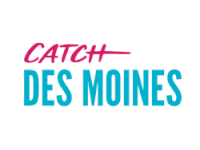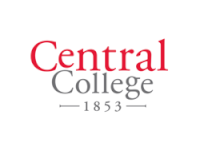The origins of the Iowa Girls High School Athletic Union can be traced to a heated argument at a Des Moines Presbyterian church. From that argument, a one-of-a-kind organization was founded and continues to serve high school girls like no other activity organization in the United States.
Iowa was one of the few states in the 1920s where girls could play high school basketball, and its popularity began to thrive in Iowa’s rural schools. However, the state’s larger schools did not have the same the enthusiasm, and people had concerns over the merits of girls participating in physical activities, as they believed it was harmful for girls to engage in “strenuous” activities such as basketball.
These arguments reached a boiling point at the 1925 Iowa State Teachers’ Convention held at the Central Presbyterian Church in Des Moines. The annual meeting of superintendents and principals decided that competitive sports before paying crowds was good only for boys' activities, not for girls', and girls basketball would no longer be a state-sponsored interscholastic activity.
One of the meeting’s attendees, who had coached girls basketball, lamented that his conscience was forever bothered “for the harm I might have done the girls” in coaching girls basketball. However, Mystic Superintendent John W. Agans responded with the memorable rebuttal, “Gentlemen, if you attempt to do away with girls basketball in Iowa, you’ll be standing at the center of the track when the train runs over you!” Agans’ powerful message led to an impromptu meeting of 25 men from primarily small rural Iowa school districts. They decided that if the Iowa High School Athletic Association, who oversaw all high school athletic activities at the time, was not willing to sponsor girls basketball, then they would form their own organization. And that’s how the IGHSAU was born.
“Gentlemen, if you attempt to do away with girls basketball in Iowa, you’ll be standing at the center of the track when the train runs over you!”
Superintendent John W. Agans
A four-man committee representing the northeast, northwest, southwest and southeast sections of the state oversaw the IGHSAU in its early stages. The committee rotated as the IGHSAU’s part-time secretary until 1947, when Rod Chisholm of Exira became the organization’s first full-time executive secretary, which is when girls basketball began to flourish. The Iowa High School Girls State Basketball Tournament, held at the Drake University Fieldhouse, featured sold-out crowds throughout the eight-session tournament. To promote its growth, the state basketball tournament became one of the Iowa’s marquee events. The IGHSAU published its own rule book and a girls basketball yearbook, and hosted coaching schools for both coaches and officials. The tournament was also one of the first sports to be televised, beginning in 1951 and reaching nine states.
When Rod Chisholm resigned in 1954, he was replaced by Dr. E. Wayne Cooley, who had big plans for IGHSAU. His first task was to expand the number of programs the organization sponsored. While basketball was still wildly successful, Dr. Cooley believed that for the organization to truly thrive, it needed to sponsor more sports. Simply put, Dr. Cooley did just that. IGHSAU sanctioned softball in 1955, while golf and tennis were sanctioned in 1956. Track and field was added in 1962, becoming the fifth IGHSAU-sanctioned sport.
Girls basketball remained the IGHSAU’s crown jewel. Taking advantage of the tournament’s new home, the spacious Veterans’ Memorial Auditorium, Dr. Cooley turned the nation’s oldest high school girls state tournament into a showcase for Iowa talent. In addition to the great basketball being played, the halftime shows were elaborate productions comprised of Iowa high school students and bands, dancing and the highlight of the evening, the Hall of Fame presentations narrated by the great Jim Duncan. In short, there was something for everyone whether you liked basketball or not.
When Title IX legislation was passed in 1972 requiring gender equity in every federal-funded educational program, high schools across the country were scrambling. The majority of schools and universities did not offer athletic programs for girls and struggled to find ways to implement the new programs. Sports Illustrated compiled a three-part story in 1973 on women sports and Title IX. One issue of the article featured girls sports in Iowa.
The IGHSAU continued to add programs: cross country was added in 1966, followed by swimming and diving in 1967 and volleyball in 1970. Soccer was added in 1998 and bowling in 2006. Currently, IGHSAU sponsors 10 sports. Today, nearly 70,000 girls compete in Iowa high school athletics. Iowa continues to rank in the top half of the United States in terms of girls high school athletic participation, despite ranking 30th in U.S. population. In addition to administrating sports, IGHSAU conducts coaching certification courses and official education clinics, and offers several scholarships that celebrate the Iowa Girl.
Iowa continues to be unique in that there are four separate activity organizations: the Iowa Girls High School Athletic Union, the Iowa High School Athletic Association, the Iowa High School Speech Association and the Iowa High School Music Association. The four organizations focus their efforts on making Iowa a national leader in administrating high school activities. Dr. Cooley, who retired as the IGHSAU executive secretary in 2002, once stated, “I take a lot of pride that every girl walks down every main street in every town in Iowa just as tall as the boy.” IGHSAU has made its mission to uphold Cooley’s legacy.
“I take a lot of pride that every girl walks down every main street in every town in Iowa just as tall as the boy.”
Dr. Cooley
This video history of the IGHSAU was written and produced by eighth-grader Noah Lovelace. Noah is the grandson of Mark Donhowe, an assistant director at the IGHSAU in the 1970’s and 80’s.






